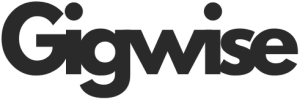Accounts payable (AP) are at the heart of any business’s operations. If set properly, they ensure timely payments, improve cash flow management, and boost overall operational efficiency.
While the manual approach has been the traditional way of handling them, it is crucial for organizations to be aware of its hidden costs. Like most other tasks, accounts payable can be automated, eliminating a number of concealed expenses, like process inefficiency or spending on paper-based invoices.
In this article, we will identify those hidden expenses and suggest the most viable digital solutions. Any company can save on its accounting; you just need to know how.
Understanding the True Cost of Manual Accounts Payable Processes

Although they have been used for decades, manual AP systems can be highly inefficient. The first step in optimizing them is understanding the true scale of the problem and where it stems from.
Labor-Intensive Invoice Processing
The manual entry of invoice data can get quite expensive, especially for large-scale projects and companies. Depending on the size of the team, it can take up to 44% of the workday, leading to the following:
- Overall productivity suffers due to employees being busy with manual data processing.
- Strategic activities and decision-making suffer as attention shifts to mundane tasks.
- Bottlenecks arise due to delays in manual invoice approvals, frustrating both staff and vendors.
Implementing accounts payable software is the best way to alleviate these challenges. Many businesses are already using it to automate routine tasks and speed up approvals.
Increased Error Rates
Humans are not created for repeated, tedious tasks, meaning that manual processing will inevitably lead to errors. Even the most experienced and meticulous professional may miss a digit, potentially leading to catastrophic impacts that include:
- Duplicate payments in accounts payable, causing unnecessary financial leakage.
- Errors in data entry that require extensive correction efforts.
- Time-consuming follow-ups with vendors to resolve discrepancies.
The hidden costs of these errors accumulate quickly, diverting resources from productive activities and inflating operational expenses.
Financial Risks: Fraud and Compliance Issues
Last but not least, manual AP processes make your financial flows more vulnerable to fraud. Without a robust digital control system, unauthorized or fraudulent payments can easily go unnoticed. Manual systems also lack transparency, increasing exposure to compliance-related risks, such as audit penalties and regulatory scrutiny.
Automation introduces stronger internal controls, reducing these fraud and compliance risks by providing clear audit trails and improved transparency.
Overlooked Financial Consequences of Manual AP
Not only do operations suffer from inefficient manual AP processes, but they can also have dire financial consequences. Many of them are easy to overlook, especially when a company operates with millions of dollars, but they tend to add up, leading to serious expenses out of thin air.
Costly Late Payment Fees
Due to the duration of manual invoice handling, payments may be delayed, often leading to late fees in AP. Automation ensures timely payments and helps organizations avoid these penalties.
Duplicate Payments and Financial Leakage
Suppliers may accidentally (or intentionally) send duplicate invoices, which may go unnoticed with manual processing and lead to duplicate payments. This may result in budget inaccuracies and fraud risks. Trying to identify and reclaim such duplicate payments manually is a labor-intensive and complex task, which is why assigning it to an automated system is an excellent solution.
Why Businesses Are Turning to Accounts Payable Automation

All the challenges of manual AP can and should be avoided. As businesses increasingly recognize the imperfection of the manual approach, they are shifting towards automation. It provides invaluable help in improving the efficiency and accuracy of AP processes, making such solutions a strategic priority for forward-thinking organizations.
Cost Savings and ROI of AP Automation
Understanding the actual cost of manual invoice processing highlights why AP automation is so valuable. Industry studies show manual processing costs approximately $10-$20 per invoice, compared to $2-$5 with automation. This dramatic reduction provides substantial accounts payable automation ROI within months.
Enhancing Efficiency and Productivity
Another key benefit of accounts payable automation is boosted workflow productivity and efficiency. The main improvements include:
- Reduced processing times, freeing staff to handle strategic activities.
- Fewer invoice-related errors minimize time-consuming corrections.
- Enhanced collaboration and communication across departments.
Implementing procurement automation extends these efficiencies across the entire procure-to-pay (P2P) cycle.
Minimizing Risk and Improving Compliance
Automating AP processes introduces enhanced security and compliance measures. Digital solutions offer built-in controls and real-time monitoring, significantly reducing the risk of fraud or unauthorized transactions. Benefits include:
- Improved transparency and control over payment processes.
- Simplified audit processes due to accurate digital records.
- Stronger compliance and minimized risk of regulatory penalties.
Implementing AP Automation: Practical Steps for Success
Adopting AP automation is about more than simply deploying new technology. Such a process requires both technical and organizational planning to be implemented successfully. These are the most vital steps to follow to achieve a smooth digital transformation in accounts payable:
Evaluating Current AP Workflow
Start with thoroughly assessing your manual AP workflow. This step helps identify hidden inefficiencies and find the areas that need immediate attention. Make sure to include:
- Mapping out current manual procedures.
- Identifying frequent delays, errors, and bottlenecks.
- Calculating actual costs associated with manual processes.
Selecting the Right Procurement Automation Software
Choosing suitable procurement automation software involves examining specific features that align with organizational needs. Considerations include:
- Real-time invoice matching and duplicate payment detection.
- Customizable approval workflows to match company policies.
- Integration capability with existing financial and ERP systems.
Ensuring a Smooth Transition from Manual to Automated AP
Once you have chosen your automated AP system, work with your staff to ensure they are ready to adopt it. The following approaches can help make the transition seamless for you and your employees:
- Providing comprehensive training sessions.
- Communicating clearly about the benefits and rationale for changes.
- Implementing a phased rollout to ease the transition.
Frequently Asked Questions (FAQs)
What are the hidden costs of manual accounts payable?
Labor costs, error handling, missed discounts, late fees, and fraud risks all contribute significantly.
How does AP automation reduce invoice processing time?
Automation accelerates approvals, eliminates repetitive data entry, and reduces error corrections, cutting processing times substantially.
What is the ROI of accounts payable automation?
Businesses typically see a positive ROI within months through reduced costs, fewer errors, and increased early payment discounts.
How can procurement automation software improve supplier management?
It strengthens vendor relationships by ensuring timely payments, provides real-time performance insights, and enhances procurement strategies.
How can a business avoid AP errors?
AP automation introduces built-in validation checks and duplicate detection tools, significantly lowering the risk of manual errors.
Word count – 1096
Characters – 7791





















